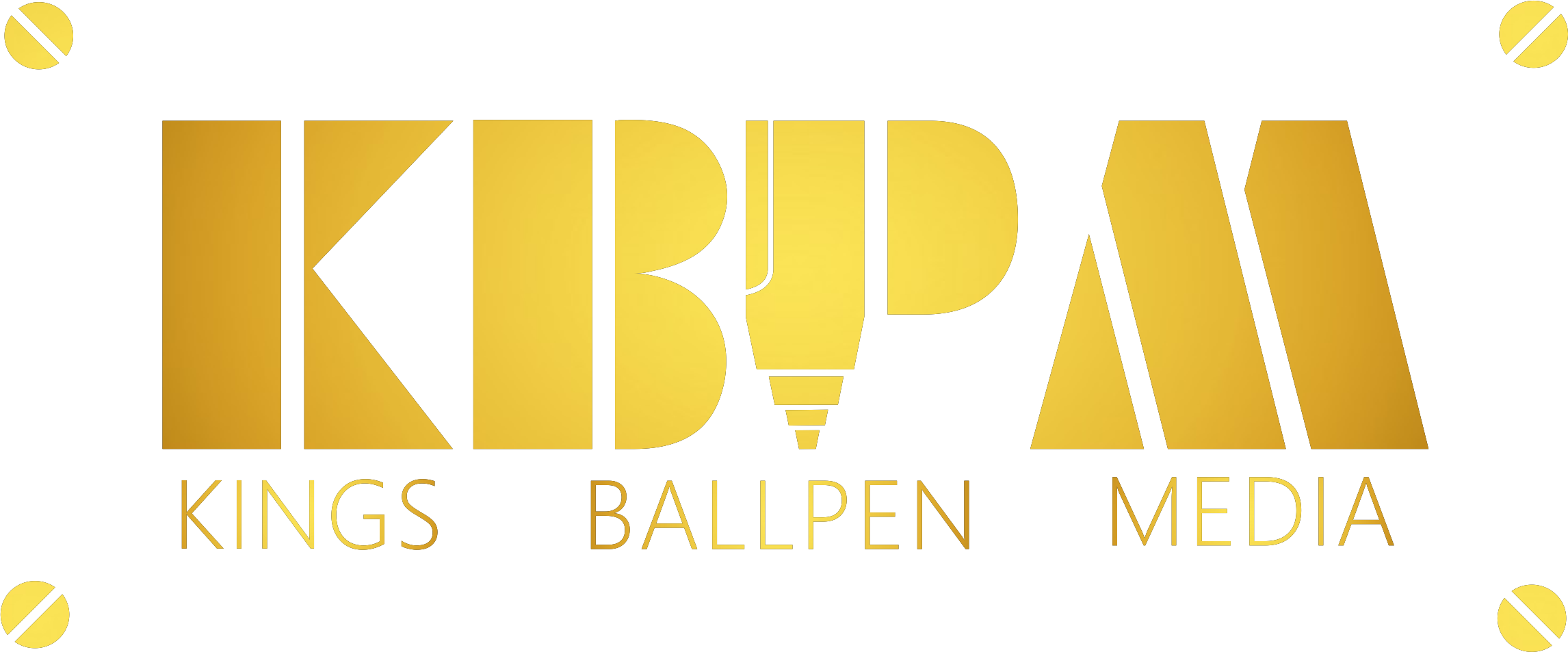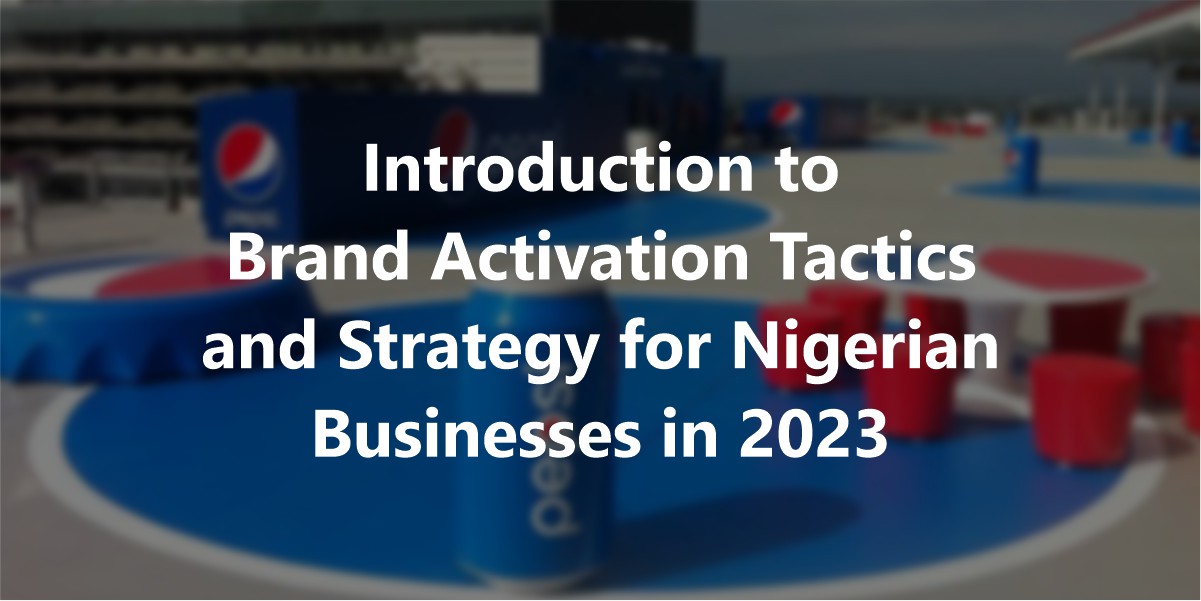Introduction to Brand Activation Tactics and Strategy for Nigerian Businesses in 2023
As a company, your brand is essential to your success. Customers’ perceptions of your brand, the image they connect with your organization, and their degree of involvement with your products and services greatly impact your overall performance. To ensure that your brand is powerful, visible, and effective, it is necessary to develop a thorough brand activation strategy.
Brand activation is the process of developing customer-engaging experiences and occasions. This involves establishing an emotional and physical connection between your brand and your target audience through the use of marketing techniques. Strategies and approaches for brand activation may include events, promotions, sponsorships, partnerships, and content marketing.
Brand activation brings your brand to life, establishes a stronger emotional connection between your brand and your target audience, and eventually increases sales. With the correct strategy, brand activation may help you establish brand loyalty, enhance customer engagement, and set your firm apart from the competition.
This article will examine the most effective brand activation methods and strategies for Nigerian firms in 2023 and offer you a road map for adopting these tactics in your own company.
Table of Contents
I. Understanding Your Target Audience
II. Developing a Brand Activation Strategy
III. Developing a Solid Brand Identity
IV. Developing a Content Marketing Strategy
V. Sponsorship and Collaboration with Influencers
VI. Creating Exciting Events and Promotions
VII. Delivering Outstanding Customer Service
I. Understanding Your Target Audience
To create a successful brand activation strategy, you must first comprehend your target audience. This involves researching your target audience, gaining an understanding of their habits, behaviours, and preferences, and developing a buyer persona to represent your ideal customer.
Understanding your target audience is essential for brand activation because it enables you to create experiences and events that resonate with them. By gaining an understanding of your target audience, you can design events and promotions that appeal to their interests and emotionally engage them.
You can conduct market research, analyze customer data, and participate in social listening to learn more about your target audience. Additionally, you can use tools such as surveys and focus groups to obtain direct feedback from your target audience.
II. Developing a Brand Activation Strategy
Once you have a solid grasp of your target market, the next step is to develop a brand activation strategy. A brand activation plan is a detailed road map outlining the methods and strategies you will employ to engage with your target audience and bring your brand to life.
Your brand activation strategy should have the following components:
Objectives: What do you hope to accomplish with your brand activation efforts? This may involve raising brand recognition, increasing sales, or fostering brand loyalty.
Tactics: What strategies will you employ to achieve your objectives? This may involve events, promotions, content marketing, and influencer collaborations, among other things.
Budget: How much will you spend on brand activation?
Timeline: When will each strategy be implemented, and when will the results be evaluated?
Metrics: How will you quantify the success of your brand activation initiatives? This could include sales, engagement, website traffic, and other metrics.
By developing a brand activation plan, you can ensure that all of your brand activation efforts are aligned with your overall business objectives and track the success of your efforts over time.
III. Developing a Solid Brand Identity
A good brand activation plan must incorporate a robust brand identity. Your brand identity is the visual and emotional depiction of your brand; it is what differentiates your brand from its competitors.
To create a powerful brand identity, you should concentrate on the following elements:
Brand personality: The personality of a brand, including its values, tone of voice, and the emotions it generates in its target market.
Brand visual identity: consists of your logo, colour palette, typography, and imagery.
Brand messaging: It is the language and content used to communicate with your target audience.
Brand values: The beliefs and values that your brand symbolizes and with which your target audience can identify.
To guarantee that your brand identity is consistent and effective, you should create a brand style guide that describes the components of your brand identity and ensures that all of your communications and marketing materials are compatible with your brand identity.
IV. Developing a Content Marketing Strategy
Content marketing is an essential component of brand activation because it enables you to engage with and develop relationships with your target audience. Information marketing entails developing and distributing valuable and relevant content to your target audience and might include blog posts, videos, podcasts, and social media posts, among others.
Focus on the following components to establish an effective content marketing strategy:
Content themes: These are the themes and issues that your content will address, and which correspond to the interests and demands of your target audience.
Content formats: The formats of your material, including blog entries, videos, podcasts, and social media posts.
Content distribution: The means and platforms through which you will disseminate your content, including your website, social media channels, email, and others.
Content promotion: The strategies you will employ to promote your content include social media ads, email marketing, and influencer marketing.
By building a complete content marketing plan, you can ensure that your material reaches and emotionally engages your target audience.
V. Sponsorship and Collaboration with Influencers
Influencer marketing is an effective brand activation strategy because it enables you to contact your target audience through the support of reputable influencers. By sponsoring or partnering with influencers, you can use their audience and reach to increase brand awareness and reputation among your target demographic.
To achieve success with influencer marketing, you must prioritize the following factors:
Finding the right influencers: locating influencers whose brand identity, beliefs, and target audience coincide with your own.
Developing ties with influencers: Developing relationships with influencers and ensuring mutually beneficial collaboration.
Creating content with influencers that resonates with your target audience and highlights your brand’s benefits.
Measuring results: measuring the impact of your influencer marketing activities and always refining your plan.
VI. Creating Exciting Events and Promotions
Events and promotions are excellent brand activation strategies because they allow you to engage with your target audience engagingly and tangibly. This could include product debuts, concerts, sporting events, discounts, prizes, and competitions.
For events and promotions to be effective, you should focus on the following elements:
Creating experiences consistent with your brand’s image: Developing experiences that are memorable, compelling, and consistent with your business identity.
Creating excitement and anticipation: Creating excitement and anticipation for your event or campaign and ensuring that your target audience is aware of it.
Utilizing social media and other marketing channels: Reaching your target audience and promoting your event or promotion via social media, email marketing, and other marketing channels.
Measuring results: assessing the impact of your event or promotion and using the resulting insights to modify your plan for future events.
VII. Delivering Outstanding Customer Service
Customer service is a crucial component of brand activation since it allows you to create relationships with your clients and assure their satisfaction with your brand. This may involve delivering responsive customer service, addressing customer problems, and offering special incentives and discounts to loyal consumers.
To deliver good customer service, you should pay attention to the following factors:
Providing a great customer experience and assuring that your customers are delighted with your brand.
Building relationships with customers: Developing client relationships: developing customer relationships and ensuring that you communicate with them in a personal and relevant manner.
Offering exceptional support: Providing great support and ensuring that your clients can get the assistance they require when they need it is providing extraordinary support.
Measuring customer happiness: Measuring customer satisfaction and utilizing the information gained to improve your customer service strategy continuously.
In conclusion, brand activation is an essential component of developing a successful brand, and there are numerous methods and strategies you can employ to activate your brand and develop relationships with your target audience. You can ensure that your brand is engaging and memorable to your target audience by focusing on having a strong brand identity, implementing a comprehensive content marketing plan, working with influencers, producing interesting events and promotions, and delivering exceptional customer service.



Leave a Reply